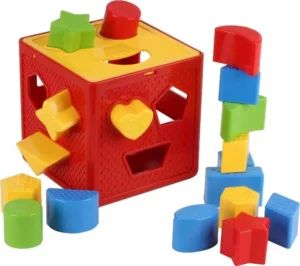Acting Like a Baby
12 May 2022
Tai chi as a traditional martial art is similar in many ways to every other martial art. We use the energy in an opponent’s action against him – this is no different than jujitsu or aikido. We have blocks, punches and kicks – so do hapkido, karate, xingyi quan and the Shaolin arts. We have joint locks – so does everyone else. We teach personal growth, integrity, balance, coordination and mental acuity – so does every good martial art. What makes our art unique is the emphasis we put on these various elements, and how we approach mastery of them.
Tai chi is considered a “soft” martial art, in that its techniques put much less (next to no) emphasis on physical strength or toughening. We don’t spend hours punching a rice bag nailed to a post, we don’t batter ourselves or each other. We all know this – everyone in class is bound to be tired of hearing me say “use structure, not strength.”
This is not to say that tai chi is not “hard.” It is. Superficially, you’ve seen me demonstrate fa-jin or “focused energy,” you’ve seen that we do punches and kicks – these are by their nature “hard” in the sense that there’s no point whatsoever in a “soft” punch or kick. I’ve said before that tai chi is “soft” when it needs to be and “hard” when it needs to be, and that it can be both or neither at the same time. The Grandmasters have described tai chi as “iron wrapped in cotton” which is a more poetic way of saying much the same thing.
But that’s not really the “hard” part of tai chi. The real “hard” part of tai chi is the demands it places on the student, and the different (and often unique) challenges it presents to the student. These are real, and it’s important to acknowledge them, the better to overcome them.
When we learn most skills – anything from sewing to cooking to marksmanship to land navigation – we follow a learning model we were first introduced to right about the time we got the hang of this thing:
The learning model is this: perform the task to standard, and the results will be predictable and satisfactory. If I select the correct shape for a given hole in the box, it will fit through.
We carry this learning model through to adulthood. If I learn a sewing stitch and when it’s appropriate to use it, the results are the same all the time and satisfactory all the time. If I learn to cook pasta correctly, every noodle I make once I master the skill will turn out properly cooked. If I learn to shoot correctly, I’ll be able to produce the same result over-and-over. If I learn to use a compass and map correctly, I can apply this skill no matter where I find myself.
Tai chi isn’t one bit like any of these skills, because the learning model is different. In tai chi, we are required to spend time paying attention to how we feel, how we process the signals our bodies tell us, how we interact with whatever surface we’re standing on, how it feels to transfer energy from one place in our bodies to another, and a myriad other details. And we’re required to do this while memorizing an array of body positions, as well as the transitions from one position to another. We then must learn to integrate all these different things into a coordinated method of movement and interaction.
This would be “hard” enough if it weren’t for the fact that we can only learn so much of this in class, and I can only teach you half of what’s there to be taught. No one has yet discovered a way to teach someone how he or she feels or ought to feel when moving. We can describe it, but we can’t feel it for you. These are discoveries a student must make on his or her own. This is a big part of the frustration of tai chi, and I suspect this is why many people give up on it without reaching their fullest potential. I’ve felt this same frustration too – I’ve wished someone could “bottle” how the moves were supposed to feel, what I was supposed to sense in my partner’s motion, how to gauge their internal energy. I’ve been VERY frustrated when I’ve done push-hands with one of my mentors and, despite literally decades of practice and study, I feel as wooden and stiff as Pinocchio and as dumb as an ox, whereas they feel simultaneously nebulous and impenetrable, and they can appear to read minds. And it’s frustrated me that they can’t transfer their abilities and intuitions to me, anymore than I can with you.
So I’m stuck with the “hard” work not only of practice and study, but also the (harder) work of letting go of my frustration and my adherence to old “peg-and-hole” model of learning. I’m stuck with the “hard” work of opening myself up to different ways of learning, of actually listening to what my body is telling me. I’m stuck with the “hard” work of being patient with myself; I’m nothing special – progress doesn’t come any faster with me than it does with anyone else.
I’ve said that the way we learn tai chi is different from the way we learn sewing, cooking, marksmanship, land nav, etc. What I haven’t yet told you is that this isn’t a new or unfamiliar way of learning.
What would you say if I told you that the way we learn tai chi is the very first way we ever learned anything?
Think of the way infants learn to walk. They see Mom and Dad and Sis walking around and resolve via some inborn impulse to imitate them. They get as far as crawling without much help. Then Mom and Dad and Sis hold their hands and steady them, while they learn to balance and figure out how to make the muscles work the right way. Their first self-propelled steps are halting and unsure and there’s a lot of plunking down on their butts until they get the knack. But eventually they figure everything out and it’s not too long before they forget there ever was a time when they didn’t know how to walk or run. Mom and Dad and Sis helped, but the infant did all the work of figuring it out – no one told baby how to do it. Even if we could, baby couldn’t understand – we generally learn to walk before we learn to speak.
It’s the same way with language, fine motor skills, spatial recognition and all the other things we forgot we ever had to learn. The process of mastery took a long period of imitation, failure, experimentation – we in fact figure out every possible way not to do things – play, interaction with others, and so on.
In a very real sense, learning tai chi requires us to approach it in the same way infants approach learning to walk, to speak, to hit their mouth with a spoon etc. The teacher can help – we can hold the student’s hands and steady them and show them how it’s done – but the student must do the “figuring out” on their own. Anyone who knows how to walk and talk and hit their mouths with a spoon has proved that they’re experts at learning this way, but we forget that this is how we learned the most important things.
This is part of the reason I make such a big deal not only of home practice, but also of approaching tai chi with a sense of play. Play, exploration and self-guided discovery are how we first learned. It’s how we figured out all the ways not to do things. When you see Yang Jun doing the standard form, what you’re really watching is someone who’s spent most of his life figuring out every possible way not to do the standard form. What you see is what’s left after he’s tried everything else.
I’m nowhere near figuring out all the remaining ways not to do tai chi. My home practice today will likely reveal a few new ways not to do it – I’ve got a long way to go.


